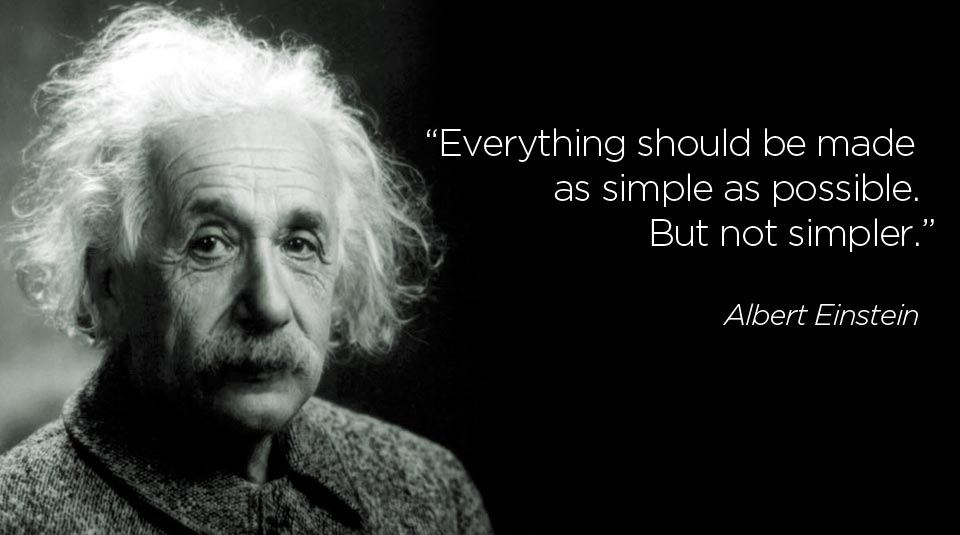It’s very difficult to keep things simple when devising a marketing plan for your business. But unless you spend the time to hone and refine that value promise, your audience is likely to walk.
Whether you’re selling a product or a service, there’s a strong temptation to tell your audience as much about your product or service as you can. To go into all the minutiae – the technology, the technical specifications, the entire list of features, and so on.
It’s a natural reaction. You’re living your product / service every day. You’re (hopefully) passionate about why you’re doing what you’re doing, and want everyone to know how wonderful whatever it is you’re selling. Simplifying things presents the perceived danger that you don’t mention something that you feel is key to their decision-making process. Or that they don’t understand your value offering clearly enough, and they walk away.
The problem is that, by and large, your customers don’t give a stuff.
Customers Don’t Care As Much As You Do
OK, maybe that’s too hard a statement to make. What I mean is that when marketing your business value to customers it’s imperative to match your communication to their expectations.
At the beginning of a customer / vendor relationship, your prospects generally don’t want to be bombarded. At this stage it’s too early to hit them with bits and bytes, acronyms, or technology. They need to know more about how your product/service fits into what they think they need to buy. They may not want to go into too much detail about all the features. It may even be too early to talk about the price.
In the old days – and by that I mean anything more than about five years ago – companies could get away with overly-complex marketing content. Prospective customers were willing to act as filters to manually weed-out the relevant information from the fluff, rhetoric, unsubstantiated claims, and corporate chest-beating.
Today, that’s no longer the case. Customers have less patience – and higher expectations of you. Your business might be offering exactly what they’re looking for, but they’re not going to spend their time to find out. That’s your job, not theirs.
The first thing that they want you to tell them is whether whatever you sell solves whatever problem they think they have. And the faster and more comprehensible you can make that initial value statement, the more likely it is that your customer will hang around to find out more about your value proposition – and about you.
The Marketing Bare Essentials
Delivering information to your customers should be considered in multiple levels. The object is to lead the customer through a path that incrementally delivers on their expectations of the content they’re looking for, in order to help them make a buying decision.
- The first level is to clearly and succinctly tell them whether they’re wasting their time looking at your value offering: does your product / service do what they need it to do. Simple, short sentences that let them know if they’ve come to the right place.
- If you’ve passed that test, that’s the time to give them more detailed information. The benefits expressed as real-world examples, so as to best resonate with their own situation.
- Finally, if you’re selling a technical solution, comes the geeky / nerdy stuff. How it works, why it works this way rather than that way, the tech specs, and so on.
Simplifying Your Marketing Messages
It’s not about using big words and technical jargon that you, your colleagues, and your peers use. It’s about simplifying the communication, using the words and phrases that your audience use. Don’t think of it as marketing. Think of it as conversation.
Distilling communication down to its bare essence isn’t just restricted to marketing content. It should filter through the whole of your business. For example, have you noticed how many companies are simplifying their logos? Look at Starbucks, or Little Chef, or DC Comics.
Or look at the trend in software design to bring things back to basics. You can adorn it with glamorous terms like UI and UX, but at the end of the day it’s about simplifying user interaction to the point of being not just intuitive, but almost unconscious. It’s like you couldn’t imagine it being any other way.
Today’s Marketing Is About Simplifying, Not Complexity
As customers, there just isn’t the time (or often the willingness) to engage with everything that’s trying to get our attention.
‘Simple’ wins over ‘complexity’ any day of the week.

